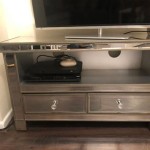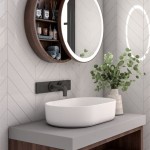Large Above Bed Mirrors: A Guide to Size, Style, and Placement
Large mirrors placed above a bed serve both functional and aesthetic purposes in a bedroom. They can create an illusion of spaciousness, amplify natural light, and act as a striking decorative element. However, choosing the right size, style, and placement requires careful consideration to maximize their benefits and ensure safety.
Choosing the Right Size
Selecting the appropriate size for an above-bed mirror depends on the dimensions of the bed and the overall wall space available. Ideally, the mirror should be slightly narrower than the bed frame itself. This creates visual balance and prevents the mirror from overwhelming the space. A general guideline is to aim for a mirror width that is approximately two-thirds to three-quarters the width of the headboard or bed frame. For king-size beds, a mirror between 50 and 70 inches wide is often suitable. Queen-size beds generally pair well with mirrors between 40 and 60 inches wide. While exceeding these measurements isn't necessarily wrong, it's crucial to consider the overall proportions of the room and the remaining wall space above the bed.
Exploring Different Styles
The style of a large above-bed mirror should complement the existing bedroom decor. The options are diverse, ranging from ornate, vintage-inspired frames to sleek, minimalist designs. Some popular styles include:
- Modern/Contemporary: Characterized by clean lines, simple geometric shapes, and thin frames, often in metallic finishes like brushed nickel or black.
- Traditional/Classic: Featuring more ornate detailing, carved wood frames, and potentially gilded or antiqued finishes. These styles often incorporate decorative elements like scrolls or floral motifs.
- Rustic/Farmhouse: Emphasizing natural materials like reclaimed wood and incorporating distressed finishes for a vintage, weathered look.
- Glamorous/Hollywood Regency: Known for opulent details like mirrored frames, bevelled edges, and crystal accents.
- Frameless: Offering a clean, minimalist look, these mirrors are often beveled or have polished edges to add a touch of sophistication.
Placement and Installation
Proper placement and secure installation are crucial for both aesthetics and safety. The mirror should be hung at a height that allows for comfortable viewing. A general rule of thumb is to leave 8-10 inches of space between the top of the headboard and the bottom edge of the mirror. This ensures the mirror doesn't feel too crowded and maintains visual balance. For safety, it’s essential to use appropriate hardware specifically designed for hanging heavy objects. Ensure the wall anchors are suitable for the wall type and that the mirror is securely fastened to prevent accidents.
Considering the Room’s Functionality
The intended use of the bedroom also plays a role in mirror selection. In a dressing room or master bedroom, the mirror’s primary function may be practical – providing a full-length view for outfit checks. In a guest room, the aesthetic contribution may be more important. The mirror’s size and placement should reflect these functional considerations. For example, a larger, more centrally located mirror may be preferred in a dressing room, whereas a smaller, more decorative mirror might be sufficient in a guest room.
Maximizing Light and Space
One of the primary benefits of placing a large mirror above a bed is the ability to enhance natural light and create the illusion of a larger space. Positioning the mirror strategically to reflect light from a window or lamp can brighten the room significantly. In smaller bedrooms, a large mirror can visually expand the space, making it appear more open and airy. The reflective surface bounces light around the room, adding depth and dimension.
Coordinating with Existing Decor
The mirror should seamlessly integrate with the existing decor. Consider the room's color palette, furniture style, and other decorative elements. The mirror frame can either match existing finishes or introduce a contrasting element to add visual interest. For example, a metallic frame can complement metal accents in lighting fixtures or furniture hardware, while a wooden frame can tie in with the bed frame or other wooden furniture pieces.
Cleaning and Maintenance
Regular cleaning is essential to maintain the mirror's clarity and shine. Use a glass cleaner specifically designed for mirrors and avoid abrasive cleaners that could scratch the surface. A soft, lint-free cloth is ideal for wiping down the mirror. For framed mirrors, dust the frame regularly using a soft duster or slightly damp cloth. Proper care will ensure the mirror remains a beautiful and functional element in the bedroom for years to come.
Exploring Alternative Shapes
While rectangular mirrors are the most common choice for above-bed placement, exploring alternative shapes can add a unique touch. Round or oval mirrors can soften the angular lines of a rectangular bed frame and create a more organic feel. Arched or geometric mirrors can add a contemporary flair. Choosing an unconventional shape can be a great way to personalize the space and express individual style. However, ensure the chosen shape still complements the overall aesthetic of the room.

46 Mirror Above Bed Ideas And Designs

An Inexpensive Bedroom Mirror Diy Playbook

Big Round Mirrors Idées Chambre Deco Décoration

Should I Put A Mirror Above My Bed

46 Mirror Above Bed Ideas And Designs

18 Mirror Above Bed Ideas To Jazz Up Your Bedroom

An Inexpensive Bedroom Mirror Diy Playbook

Large Mirror Behind Bed Comfortable Bedroom Wall Decor Above Classy

What Size Artwork Over A Queen Bed

Premium Photo A Bedroom With Large Mirror Above The Bed And Lamp It








